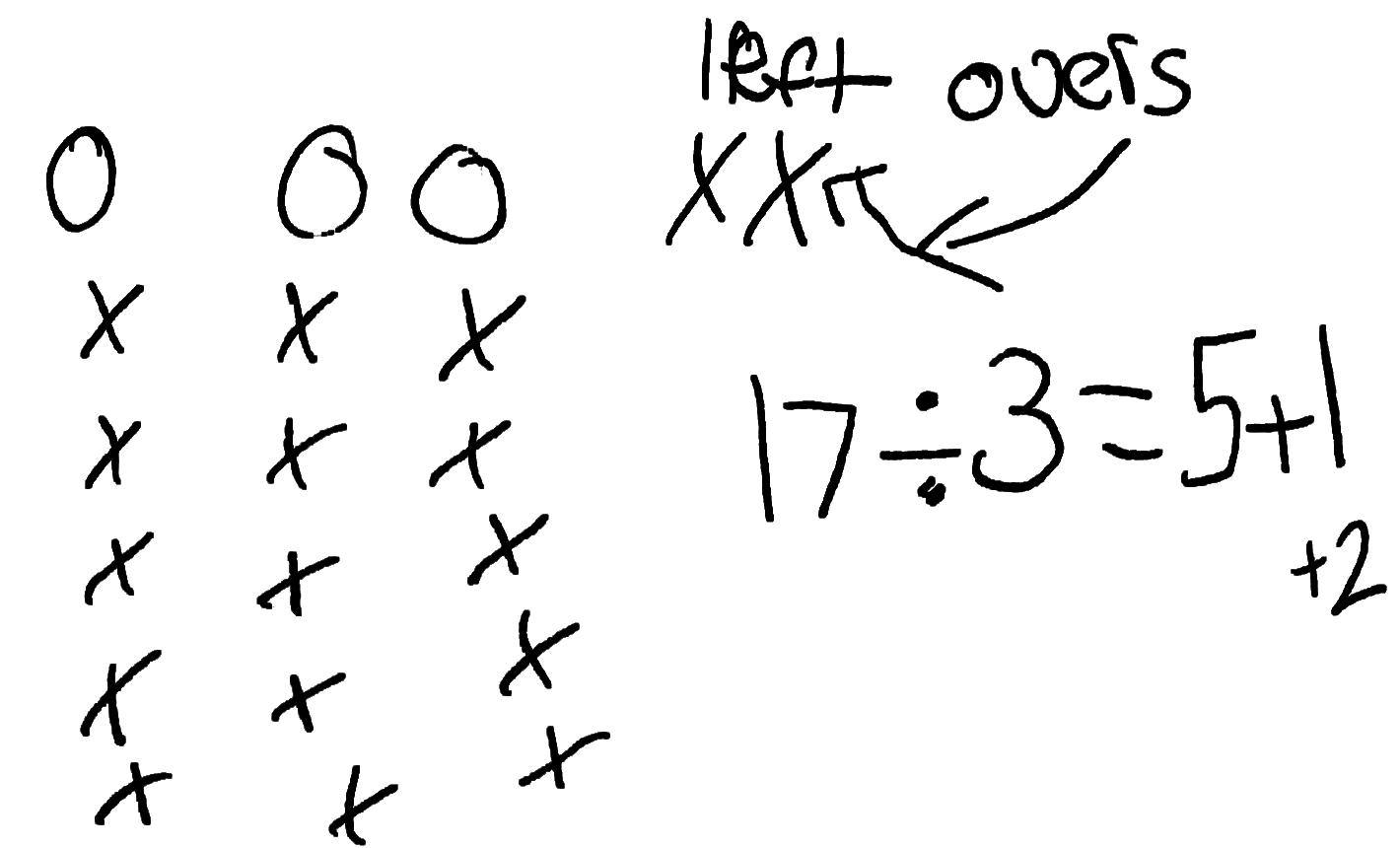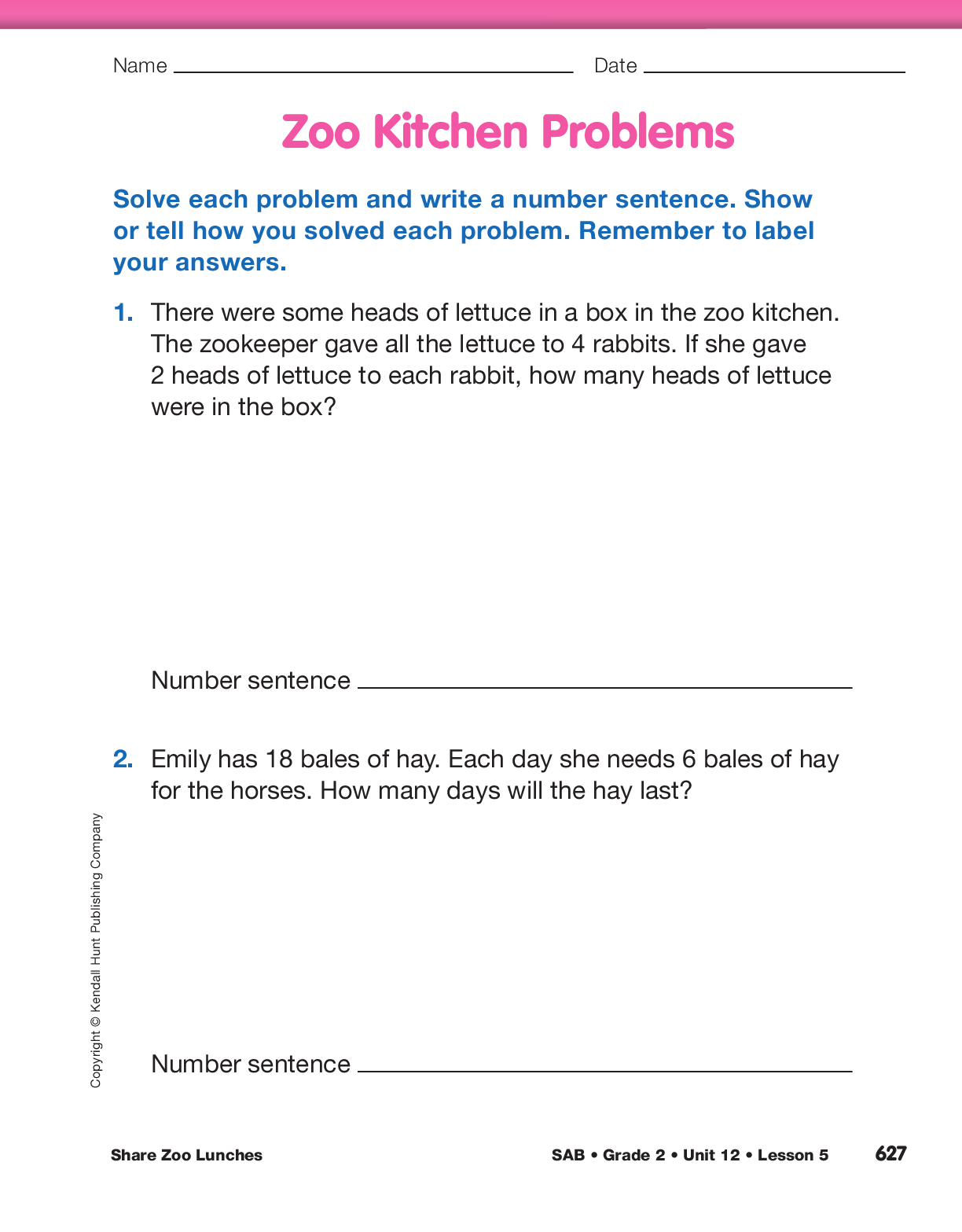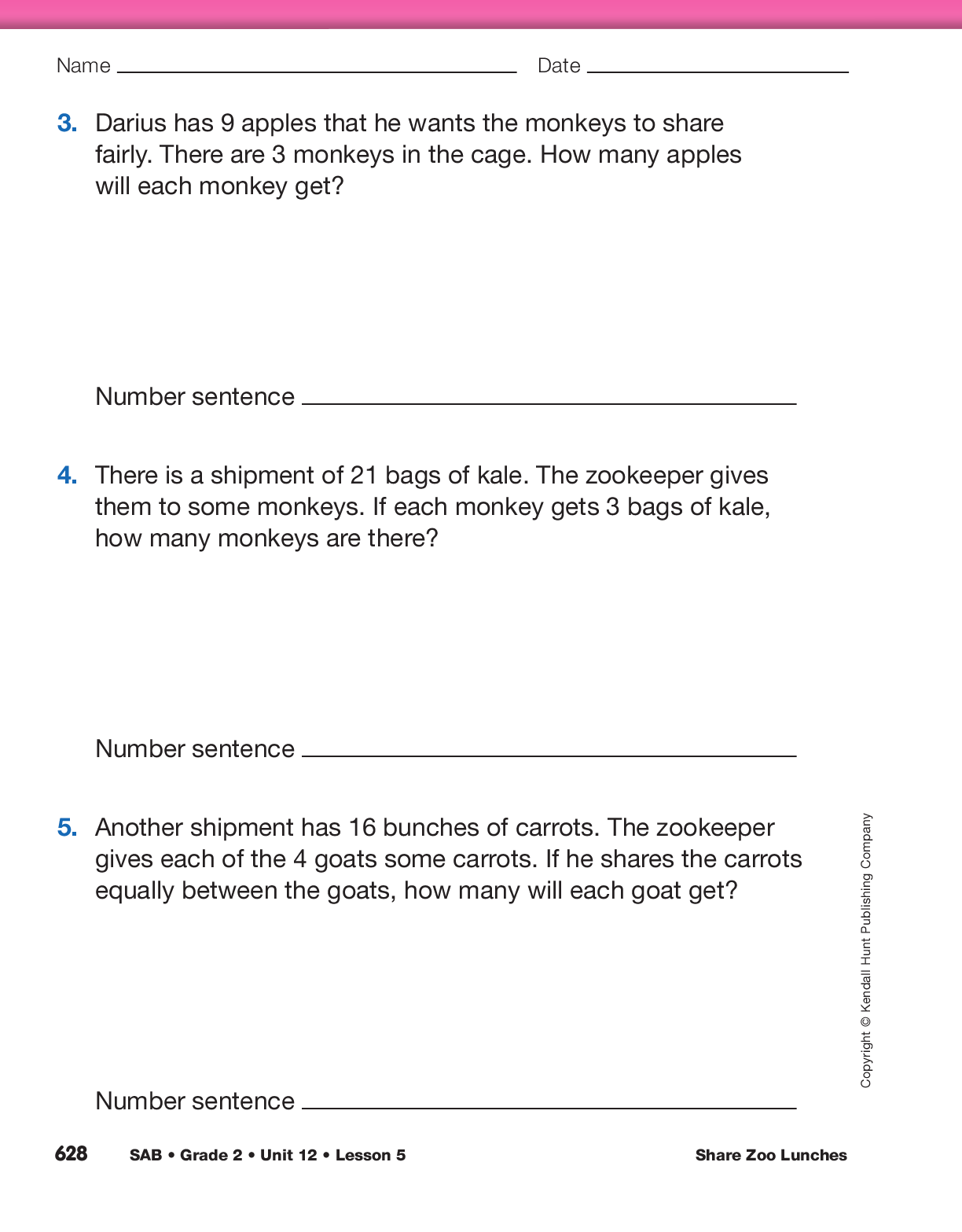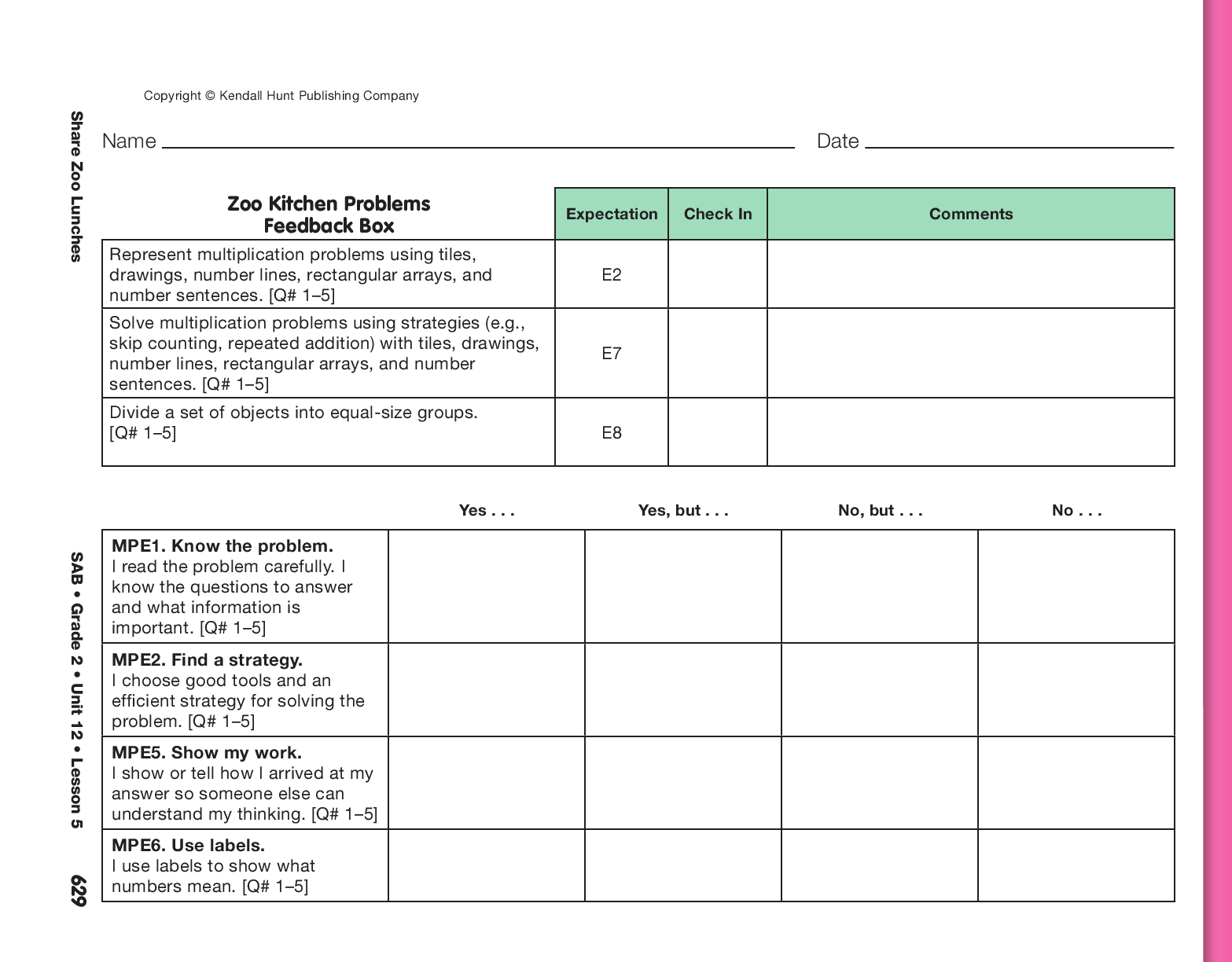Use the display of
Sharing Problems
Master to present Question 5, a problem with leftovers:
- One day the zookeeper brought 18 carrots to share equally with the 4 apes. How many carrots will each ape get?
Ask student pairs to discuss the problem and encourage them to draw pictures or use connecting cubes.
- How did you solve the problem? (Possible
response: I drew a picture and I kept giving each
ape a carrot until I ran out.)
- What is the answer to the problem? Be sure to
include a label. (Possible response: I gave each
ape
4 carrots, but I had 2 left over.)
- What number sentence represents this problem?
Students may give the following responses:
- I gave each ape 4 carrots and there were 2 left
over for another day.
- I gave each ape 4 carrots and since there were
2 left, I cut the 2 carrots in half and gave each
ape 412 carrots.
- I gave 2 apes 5 carrots each and 2 apes 4 carrots
each.
Discuss ways to write number sentences to represent problems with leftovers. The following list shows some ways students could represent Question 5:
- 18 ÷ 4 = 4 and 2 left over
- 18 ÷ 4 = 412 or 4 and a half
- 4 + 4 + 4 + 4 + 2 = 18
- 5 + 5 + 4 + 4 = 18
- 4 × 4 + 2 = 18
- A class of 18 students is going on a field trip to the zoo. There are 4 adults who will drive the students. How many students should go in each van?
Encourage students to draw pictures or use connecting cubes to solve the problem. Two vans can take 4 students and two vans can take 5 students.
Have students discuss when it makes sense to divide the leftovers and when it does not make sense. For example, carrots can be divided, but people cannot.
Note that we refer to leftovers instead of remainders since
we try to use language that is already part of students’
vocabulary. You may wish to introduce the more formal
term remainder, but be sure to link it to situations students
understand.
Help students understand various ways to write division
number sentences with leftovers. For the problem below,
the student wrote 17 ÷ 3 = 5 + 1 (corrected by teacher to
2 left over). She indicated that she had 5 equal groups plus
2 left over, but without labels for the numbers, the number
sentence is incorrect. Encourage students to write the
number of equal groups and the number left over (e.g.,
17 ÷ 3 = 5 flowers and 2 leftovers).

Assign the Zoo Kitchen Problems in the Student Activity Book for students to complete individually
to assess students’ understanding of division concepts.
Display the Math Practices page in the Student Activity Book Reference section and encourage
students to focus on Math Practices 1, 2, 5, and
6 as they complete the assessment.
Use the Zoo Kitchen Problems and the Feedback Box in the
Student Activity Book to assess students’ abilities to
represent multiplication and division problems [E2]; solve
multiplication and division problems using strategies (e.g.,
skip counting, repeated addition) with tiles, drawings,
number lines, rectangular arrays, and number sentences
[E7]; divide a set of objects into equal-size groups [E8]; know
the problem [MPE1]; find a strategy [MPE2]; show work
[MPE5]; and use labels [MPE6].


















